“I know just from common sense that at some point most of my family members were born at home,” Toi Pearson, a 32-year-old mother of two living in Atlanta, Georgia, tells me. Her family has roots in the deep south of the US, though they eventually migrated westward to Texas, working as sharecroppers. For centuries, their children would have been delivered at home, but by the time Pearson was pregnant, in 2016, “no one [was] sitting around reminiscing about home birth”.
The prevailing notion in her community was that this was something only starry-eyed middle-class white women did, something black people no longer “had to do”. But Pearson considered birth an incredibly intimate experience, and she wanted hers to be guided by someone she knew. She hadn’t set out to find a black midwife, but she connected instantly with Christine Taylor.
The founder of Birth by Grace Midwifery in Atlanta, Taylor grew up on the south side of Chicago and worked as a labour and delivery nurse for years before deciding to go to midwifery school. She remembers the first time she met a midwife – she thought: Wait! You’re delivering a baby and you’re not a physician?
I met Pearson and Taylor in early 2020, after writing a book on an epidemic of anxiety in American motherhood. Interviewing black mothers, I became fascinated by the history of black midwifery in the US and appalled by how little I knew about it. In writing the book, I’d wanted to find resonances and gaps between the experiences of white and black mothers. I discovered that for many of the black women I talked to, experiencing birth with a midwife or helping other black women give birth was a cathartic, empowering, and transformative experience – and it often stood in stark contrast to traumatic encounters with hospitals, doctors, and medical institutions.
That Pearson was hesitant to get a home birth and Taylor doubtful that anyone other than doctors could deliver babies shows just how the practice of midwifery, once performed predominantly by black women in the US, has been systematically eliminated and replaced by the predominately white male field of obstetrics – with consequences for all women, but particularly severe ones for black women. It is a history that mirrors the wider history of racism, patriarchy and capitalism in the US.
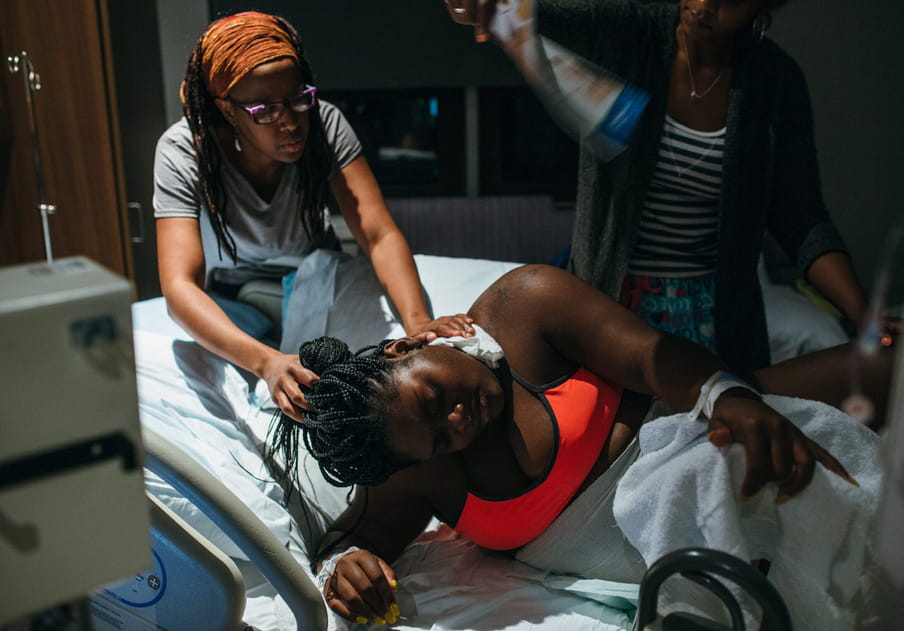
A short history of ‘grand’ midwifery
The story of black midwifery in the United States begins with the “granny midwives”: black women who were brought to the US on slave ships.
In recent times, historians have suggested renaming these midwives “grand midwives” to discard the condescending and racist term “granny.” Grand midwives were not mere medical care providers as we understand midwives to be today. Rather, according to sociologists Keisha Goode and Barbara Katz Rothman, they were important community figures, “biologically and socially related women that provided care, nurturance, and empowerment to children, other women, and their families”.
Grand midwives blended biological and medical knowledge with traditional spiritual practices: they might offer a woman teas and herbs to speed up labour, while simultaneously reading from the Bible, or placing an axe under a woman’s pillow to “cut” pain. Research by historian Kelena Reid Maxwell found that a black midwife in the 18th century might apply pomades to a woman’s hair and braid it; she might massage the woman with talcum powder and rose water.
These practices calmed the woman down and offered a deeper, ritualistic care and connection. After the birth, the midwife would salt the placenta, tie it with a specific number of knots, before burying it at a precise depth – measured in inches – in the ground. Nearly all midwives would pray: this was the bedrock of their practice.
A grand midwife had to have a calling; she had to be driven by a spiritual or religious quest into midwifery. Usually, midwives were descended from long familial lines of practitioners, knowledge passed along from generation to generation.
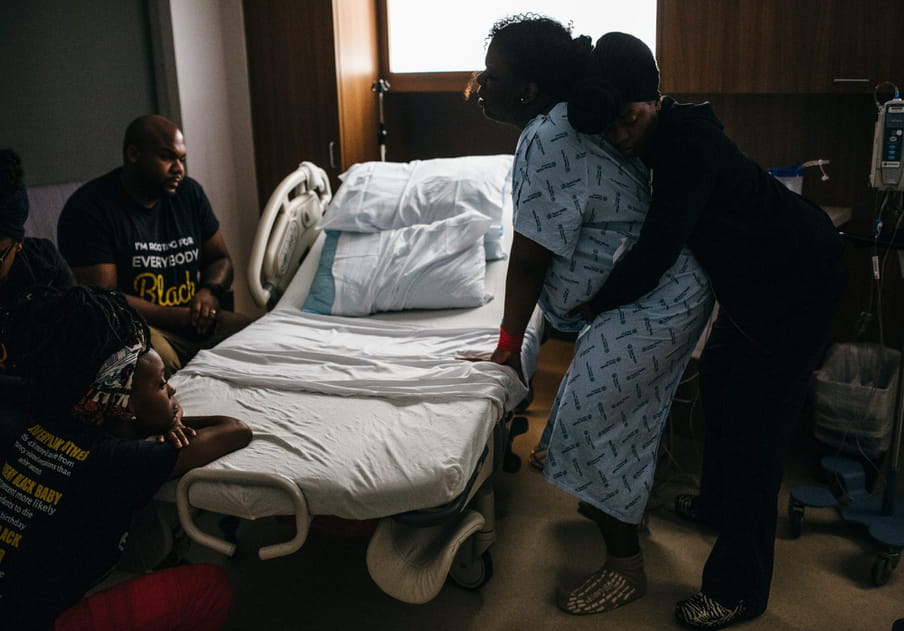
An assault on tradition
In an era when black women were routinely beaten, whipped or raped – and in some cases exploited in experiments by aspiring doctors – midwives offered a precious refuge of care. Their attentions were not only medical but spiritual. As Maxwell pointed out, “white women trusted midwives because they performed like doctors when they were with them, and black women trusted midwives because they did not perform like doctors when they were with them”.
The demise of black midwifery dates from the early 20th century when white progressive women reformers began to blame midwives – immigrant and black midwives in particular – for high rates of infant and maternal mortality.
One such reformer, Julia Lathrop, lobbied the federal government to create an agency devoted to women and children’s welfare. Founded in 1912, The Children’s Bureau took on the task of conducting the first nationwide studies on maternal and infant mortality. The studies did not point to midwifery as the main cause of these deaths. To the contrary, substantial evidence suggested that hospital birth was more fatal for both mothers and babies.
Statistics for home births attended by midwives, and for mothers and babies in cities which provided midwifery services, show better outcomes than in cities where midwifery was out of favour (and subsequently banned.) Instead, these studies attribute high rates of infant and maternal mortality to economic circumstances. Mortality was higher in families with fathers earning low incomes and mothers working outside the home, especially in physically demanding jobs.
In spite of this data, racist assumptions about the uncleanliness, “backwardness”, and inferiority of black and immigrant midwives ultimately prevailed. These midwives were considered by the medical establishment to be a “necessary evil”. Necessary because there weren’t enough doctors to deliver black women’s babies, evil because of their deviation from “scientific” norms, in which only white male doctors could possess the authority and expertise to manage a birth (even if they’d never actually attended one.)
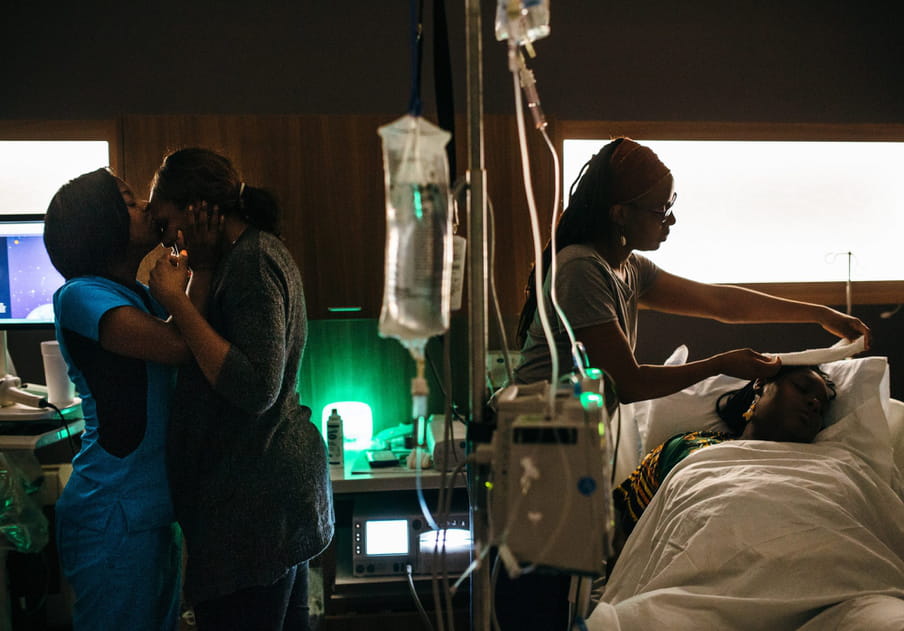
The 1921 Sheppard-Towner Act, written largely by Lathrop but named for two male senators, heavily regulated what midwives could do and how, bringing black midwives under the supervision of predominantly white nurses. The latter brought to the task racialised ideas of effective versus dangerous practices and beliefs, and many felt disdain for the traditional ways of grand midwives: midwives were routinely described as “dirty”, “superstitious”, “diseased”, “ignorant”, and “unclean”.
The regulations imposed by Sheppard-Towner were as much if not more about what midwives could not do as about what they could. They were not to attempt to intervene in any medical situation – for example, haemorrhaging – and were not trained to do so. Instead, they were to call the doctor. They were no longer to practise familiar rituals. Midwives’ bags, containing the equipment they brought to births, were routinely inspected, and if found to contain any forbidden objects – such as homemade salves or herbal concoctions – the midwife could lose her license.
Even as the earliest Children’s Bureau studies considered the impact a family’s economic situation had on birth outcomes, the new regulations focussed less on black women’s labour conditions, wages, or societal situation, and more on dressing black midwives in white and scrubbing them into submission.
The single most important focus of the nurses training the midwives was on cleanliness: midwives were instructed on how to clean not only their instruments but themselves and their houses – which could be inspected at any time by white nurses. Goode and Rothman write: “Clean, sterile, and dressed in white, midwives were symbolically cleansed of their race, their sexuality, and their motherhood.”
Still, midwives remained the preferred, and the only, option for most black women in the US south into the mid-20th century: in 1940, 52% of white babies were delivered in hospitals, compared to 22% of black babies. Gradually, this would change, with the great migration of southern blacks to the north and west; the cultural and racial marginalisation of midwifery as backwards and outdated; the passage of the Hill-Burton Act of 1946, which provided funds for the construction of rural hospitals; and finally, the dismantling of Jim Crow laws.
By 2012, 98.6% of all US births occurred in the hospital, and the vast majority – 92% – were attended by physicians. Certified Nurse-Midwives attended only 7.9% of births nationwide, and only 13% of those births were those of black women.
In the same year, Taylor completed her training and qualified as a midwife. By then, only 0.5% of all black births were home births.
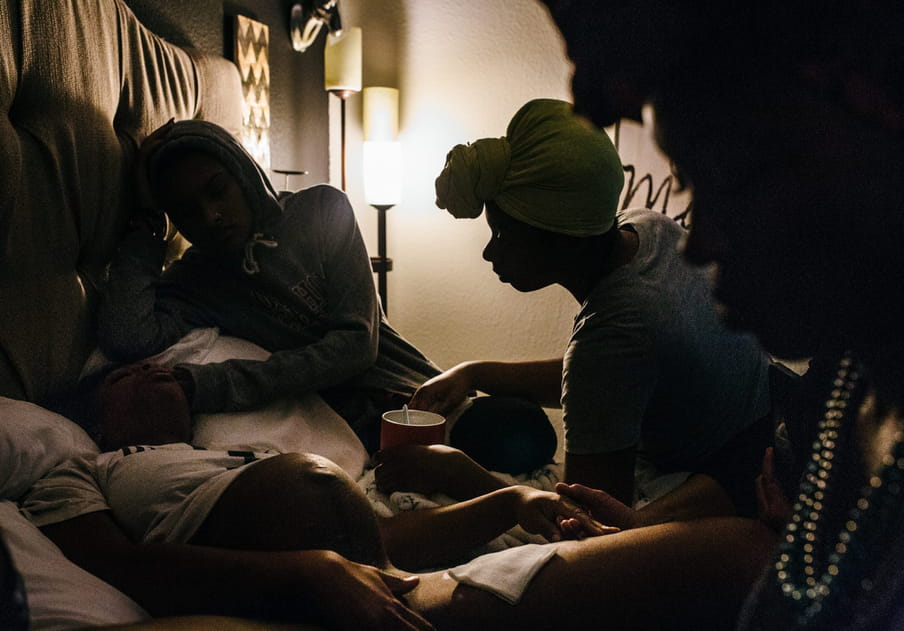
A moment of truth
Taylor had both of her own daughters at the hospital. Her births weren’t traumatic, but they were driven by fear, and by the notion that birth was a dangerous medical event in which anything could go wrong. At that time, she still worked as a labour and delivery nurse but would soon come to realise that she was working within a system that was limited, and sometimes – for women of colour in particular – deeply problematic.
If she had another baby, she told me, she’d do it totally differently: at home, with a midwife. But then it was about controlling everything she could, about quashing the fear. “It was running away from it versus, like, embracing it.”
I asked her what she’d experienced as a midwife that had changed her perspective, and she told me, “I’ve witnessed the power of women.”
One of those women was Toi, who still maintains a close friendship with Taylor.
“We had enough of the same cultural experience being black that there were nuances about me that she understood that my husband didn’t even understand because my husband is white.” She recalled the first time Taylor came for an appointment: “She plunked down at my house and snuggled back a little bit and she was like, ‘Tell me how y’all met.’” And Pearson thought, “I know people like her! That’s my aunt.”

Pearson’s labour lasted 26 hours. Taylor and a doula named Shakana guided her through each step. They spoon-fed her ice. Wiped her down with lavender and clary sage. Did not say a word about time. At one point, with her contractions intensifying, Pearson began to weep and shout. Shakana held her wet and snotty head, and Taylor came over and wiped her nose.
Soon after, Taylor told her the baby’s head was almost out and Pearson reached down and felt it. Her mother and sister were there, Pearson was leaning against her husband, and then, “his little head came out, which was crazy, and then I pushed again, and the rest of him came out and everyone’s screaming HE’S HERE and [Taylor] is crying and the doula is crying … It was absolutely beautiful.”
US maternity care in a state of crisis
When Taylor first moved to Atlanta from Chicago, she took a job at a private practice that cared mostly for middle and upper-middle-class white women. But wanting to spend more time with her two young daughters, and also feeling a disconnect in the position, she left, making the decision to transition to home births.
What she discovered in home birth was shockingly simple: “I can actually midwife with a client.” It was like the verb came alive. She could walk up and down the street with a woman. Encourage her to trust the process. Feed her if she was hungry.
Little by little, Christine has seen her client base shift from predominantly white to predominately black women. The pandemic has intensified this trend: many more women, including black women, are seeking home birth. The limitations and dangers of hospital birth have been starkly illuminated, and at the same time, the utter failure of many US states to provide and support alternatives to hospital birth is becoming clear.
In late March, the American College of Nurse-Midwives, which represents more than 12,700 Certified Nurse-Midwives and Certified Midwives across the US, wrote a letter to President Trump in which they stated that the demand and need for midwives has never been higher, and yet, "there are superfluous barriers that reduce access to midwifery care that must be immediately removed".
The letter declares that US maternity care is already in "a state of crisis" compared to that of other similar nations, and this crisis is being exacerbated by the pandemic. It asks for the president to intervene to lift restrictions, particularly on the practice of Certified Midwives, who are frequently denied hospital and prescribing privileges and prevented from collaborating with doctors, and who in some areas – particularly the rural south – are not recognised as healthcare providers at all. So far, the president has taken no action, though the demand for midwives – and home birth midwives in particular – continues to surge.
Racism at birth
The evidence that black women and babies fare far worse than their white counterparts is overwhelming. Black women are four times more likely than white women to die in childbirth. Black infants are twice as likely to die in their first year of life as white infants. This is true for infants born to black mothers at every education level. The cause of these disparities is shockingly simple: racism. Study after study points to racism, more than socioeconomic status, income, education, or even pre-existing health conditions, as the significant factor in black women’s birth outcomes. Trauma grinds black women’s bodies down.
Jennie Joseph, a black midwife who runs a practice and birthing centre in Winter Garden, Florida, describes racism as “the genesis” of all of these issues and points out they are unlikely to be solved by technical or medical interventions. We’re not getting to the root of the problem, just as the white nurses educating black midwives in the 1920s weren’t addressing the core causes of black women’s poverty but were teaching midwives to perfectly starch their gowns.
In Joseph’s experience working in disenfranchised neighbourhoods, where women tend to have high rates of preterm birth, sending women to the hospital frequently failed to prevent or improve bad outcomes: they’d be given steroids, drugs, admitted for treatment, and their babies would end up in the NICU. But Joseph managed to eradicate prematurity in the highest-risk zip code in her area by simply providing the midwifery model of care to many women who had never experienced the luxury of a provider taking the time to listen to them, to care about their lives and their bodies.
The most effective interventions might be the most straightforward and the least expensive – which could be in part why a privatised healthcare system that is vastly unequal and driven by a profit motive has not yet widely adopted them.

There are shockingly few studies on black midwifery in particular, but one narrative review of studies on black women’s antenatal care from 2006 to 2017 found that black women who sought prenatal care at clinics staffed by midwives had lower rates of C-section and preterm births, and reported feeling more empowered by their care.
A major 2018 study on midwifery in the scientific journal PLOS One, which mapped the integration of midwives into healthcare systems in all 50 US states – measured by factors such as the licensing of midwives and their hospital privileges and insurance reimbursement – found that states with higher rates of integration had better birth outcomes, whereas those with lower rates of integration and fewer midwives had worse outcomes, measured by factors like preterm births, C-sections, and neonatal deaths. The latter states also tended to be the states with the highest black populations, predominantly in the South: for example, Alabama, Mississippi, and North Carolina.
The tradition and the talent
Knowing the immense disparities in care, Taylor encourages her clients to be informed and speak up. This is especially important in home birth, where clients might need to be transferred to a hospital, out of her care. Taylor tells me the story of a woman who became preeclamptic during her labour and had to move to the hospital for a C-section. The woman asked lots of questions and remained a strong advocate for herself, as did her husband, who was right there with her. “I just wish all black women had that because a lot of things wouldn’t be going on to their bodies and happening to their bodies,” Taylor says.
Still, despite several years of practice and birthing success, Taylor has often encountered judgment from the hospital staff on occasions when her clients have to be transferred. “The state is anti-home birth,” she says. “This country is very anti-home birth.” She tells me the story of a client whom she’d noticed had gone into HELLP syndrome, a dangerous and severe version of preeclampsia.
Catching it early, Taylor took the woman to the hospital – to the surprise of the doctors. "How did you recognise this?" They kept asking her. "Who are you?" She laughs as she remembers this. “They think we’re just out here doing whatever. That there’s no clinician caring for women.”
“We’re very cautious ... ” Taylor begins to say before stopping to correct herself as if this word represents a philosophy she doesn’t want to espouse. Finding the right word, she continues: “We’re watchful throughout the entire pregnancy.”
I asked Taylor why she named her midwifery practice Birth by Grace. “Mmm-hmm,” she starts, as though she’d been expecting the question. “The natural process of birth, when it’s left alone, happens very beautifully. That’s how I came up with the name. By the grace of God, I’m able to do it, I’m skilled to do it, I have all the things I need to be a safe and supportive provider. It’s a very spiritual journey for me.”
Editor’s note: We earlier published the wrong version of this story and have now replaced it with the right one.
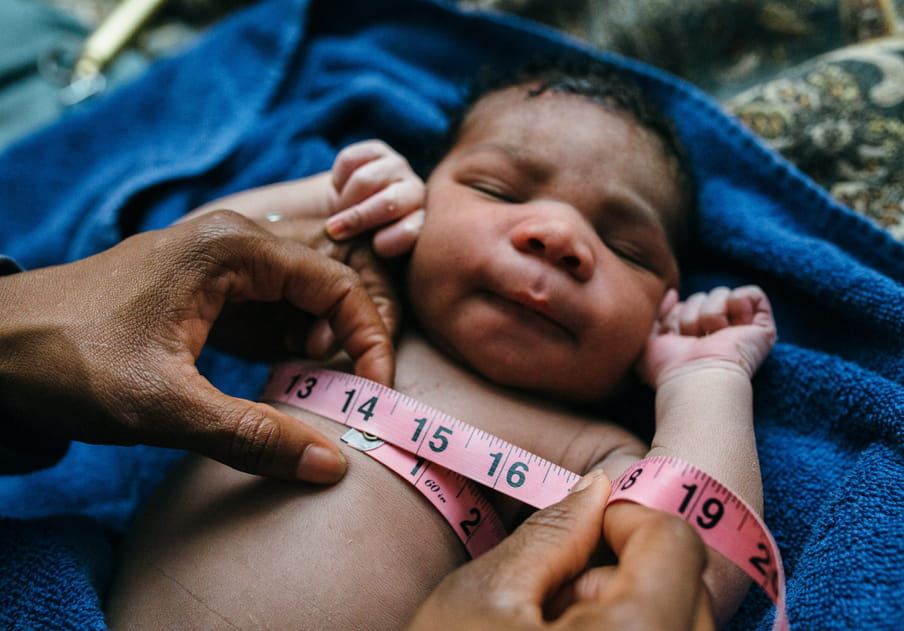
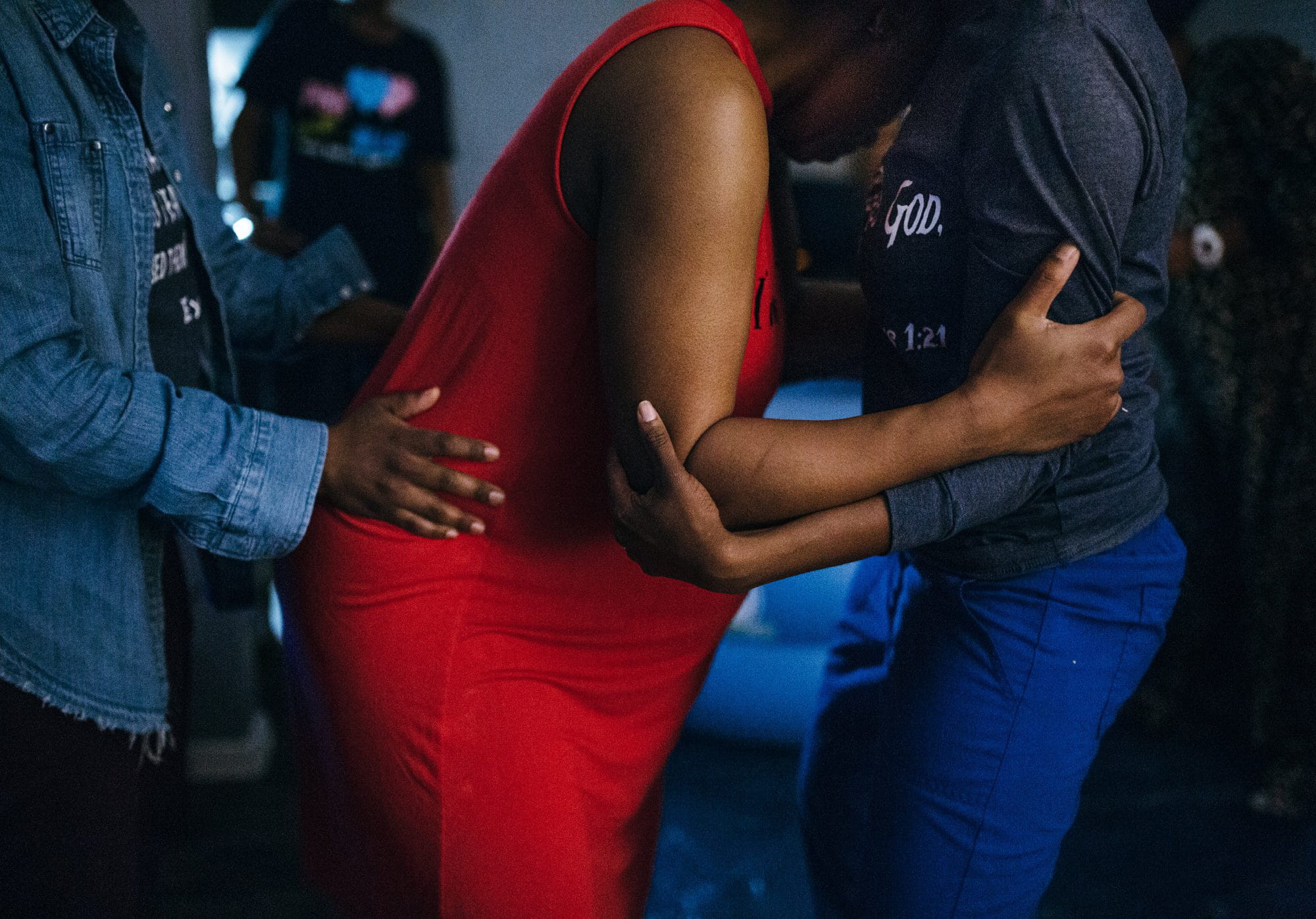 About the images
While working on her "Birth" project, photographer Elaine Baca met midwives Tereé Fruga and Kennasha Jones of My Sister’s Keeper Birth and Midwifery in Dallas, Texas. She started to work closely with them and document their practice: their presence before, during and after birth helps to relieve the mother from contractions’ pain, guide interaction with families and tend to newborns. You might think: "this is what midwives are doing, isn’t it?" So why is their story relevant? Because being allowed to document and report these unique moments and stories enables speaking out about the role of black midwives in the US, "an issue that people have no idea about", as Baca says. (Veronica Daltri, image editor)
About the images
While working on her "Birth" project, photographer Elaine Baca met midwives Tereé Fruga and Kennasha Jones of My Sister’s Keeper Birth and Midwifery in Dallas, Texas. She started to work closely with them and document their practice: their presence before, during and after birth helps to relieve the mother from contractions’ pain, guide interaction with families and tend to newborns. You might think: "this is what midwives are doing, isn’t it?" So why is their story relevant? Because being allowed to document and report these unique moments and stories enables speaking out about the role of black midwives in the US, "an issue that people have no idea about", as Baca says. (Veronica Daltri, image editor)
Dig deeper
 How 50 years of racial progress fuelled a global movement against racism
Protests against racial injustice are nothing new, but they’re different this time around. The Black Lives Matter movement is a response to worsening racism, but it’s also the result of black people’s increasing power, influence and progress.
How 50 years of racial progress fuelled a global movement against racism
Protests against racial injustice are nothing new, but they’re different this time around. The Black Lives Matter movement is a response to worsening racism, but it’s also the result of black people’s increasing power, influence and progress.


